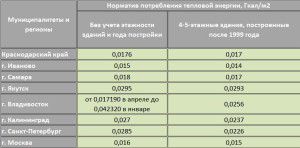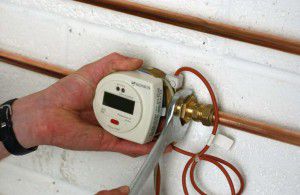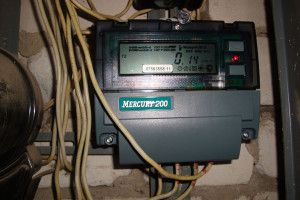How can we verify the correctness of current tariffs and payments for district heating? To solve this issue, you need to know the accrual algorithms and the factors affecting them. Consider the most common heating tariffs for the population and methods for calculating them, depending on the type of energy source.
Calculation of payment for heating without a meter
The vast majority of apartments do not have individual heat meters. But what does the heating tariff consist of in this case? The management company that provides district heating services during the calculation is guided by regulatory documents and consumption standards.
There are several ways to calculate the heating tariff. It all depends on whether a common house meter is installed or not. If this meter is available at the end of the month, the readings are taken and the consumed heat energy is distributed among the apartments based on their living area.
If there is no such type of meters, there are several options under which the central heating tariffs apply:
- Full payment. Its size depends on the current tariffs of the Management Company. They are determined on the basis of many factors - the region, the specifics of heat supply, etc. That is why heating tariffs are different not only in individual cities, but also within the same region.
- Preferential payment. Possible only after applying for a subsidy. The amount of reduction is determined for each competitive case.
The new heating tariff is defined as the amount of consumed Gcal per 1 m². The table shows the values of the norms for some regions of Russia.
Exact data can only be found in the Management Company. When changing the tariff plan, she is obliged to warn her customers. If necessary, an annex to the contract is drawn up.
All heating tariffs for legal entities differ from the prices for physical ones upwards.
Heat costs with a heat meter
The issue of thermal energy consumption has always been a contentious issue. Often, due to the poor condition of the central heating supply lines, the level of heating of the coolant leaves much to be desired. Considering the fact that heating tariffs differ by region, it is recommended to install heat meters.
If a heat meter is installed in the apartment, then the calculation according to the new heating tariffs is simple. It is enough to multiply the readings of the device for the reporting period by the cost of 1 Gcal of thermal energy. But is it possible to verify the relevance of the last figure and is it possible for the tenant to independently calculate the heating tariff?
Alas, all Management Companies do not advertise the methodology for the formation of the cost of district heating. Upon request, you can get a general calculation method, but without specific numbers. But for each heating tariff by region, the following components are distinguished:
- The cost of purchasing heat from a resource provider. In fact, the Management Company is an intermediary that provides heat transportation from the resource supplier to the final consumer. Therefore, the value of tariffs for central heating is determined by the purchase of thermal energy from the resource provider.
- Internal expenses of the Criminal Code - depreciation and updating of equipment, repair of heating mains, payment of wages to employees.
If there is a suspicion that the heating tariff does not add up to the actual figures and current expenses of the Criminal Code, and is much too high, you can contact the regional housing inspectorate. Before this, it is recommended that you familiarize yourself with Law No. 307 of May 23, 2006, which determines the rules for the provision of housing and communal services.
In case of unlawful overstatement of heating tariffs for legal entities or individuals, the service provider is obliged to recalculate within 5 days (Article 56 of Law No. 307).
Calculation of the tariff for gas heating
How to calculate the operating costs for autonomous gas heating? This is one of the important points in organizing this type of heat supply. In this case, there will also be different heating tariffs.
For residents in an apartment building, it is necessary to correctly issue permits for disconnecting from central heating. Not in all cases this is possible due to common house piping. But if the new heat supply tariff does not suit you, it is best to try to complete this procedure.
The following factors will be taken into account:
- The ability to disconnect from heating a separate apartment without compromising the overall heat supply of the house;
- The volume of gas supplied must ensure the operation of heating equipment - a boiler or convector;
- It is recommended to install a boiler with a closed burner and a coaxial chimney. The ventilation system of an apartment building is not designed for additional loads.
The tariff for gas heating develops according to the same principle as for the central one. The difference lies in the amount of energy consumed. If in a centralized system the user cannot increase or decrease the heat flow, then for a gas volume it is determined by the flow rate and operating mode of the heating equipment.
In this case, it is possible to calculate the tariff for gas heating by receiving information on prices from the Management Company. They include base value and surplus ratio. The latter takes effect if the consumer has exceeded the consumption limit. Usually this boundary is determined by 6000 m³ in
Currently, the tariff for gas heating in the regions is from 4.2 to 4.8 rubles. for 1 m³. A prerequisite is the installation of the meter, since there are no gas consumption standards for autonomous heat supply.
Unlike central heating tariffs, a standalone scheme can reduce costs. To do this, it is necessary to insulate the building (apartment), as well as use modern materials to complete the set.
Calculation of electric heating tariffs
If the organization of gas autonomous heating is impossible for a number of objective reasons - you can consider an alternative electric. For this, it is necessary to install boilers, convectors or other heating appliances powered by electricity.
For apartment buildings with no gas main, a special preferential tariff for gas heating is applied for legal entities and individuals. The procedure for switching to it is currently simplified - just write a statement in the Criminal Code, which will be considered within 7 business days. Only after this will preferential tariffs for electric heating come into force.
In addition, significant savings can be achieved by switching to a multi-tariff plan. For this, installation of a multi-tariff meter is required, which applies different values of tariffs for electric heating depending on the time of day:
- Differentiated by two zones of the day. At night, the fee is significantly less than during the day.
- Three tariff plan. In addition, peak load rates during the day are taken into account.
The duration of the tariffs for electric heating is determined by the Federal Tariff Service. Usually, in order to minimize costs, a two tariff meter for electricity is installed.In addition, the heating system is being modernized by installing a heat accumulator.
Electric heating in a private house can be combined with solid. In this case, the operation of the electric boiler will provide quick heating of the coolant, and solid fuel - maintaining the required temperature level.
Is it possible to reduce the existing heating tariff? To do this, you must provide evidence of inflated prices. In practice, the procedure can take several years. That is why they prefer to switch to autonomous heating.
In the video material you can familiarize yourself with the difficulties of challenging tariffs for district heating.







